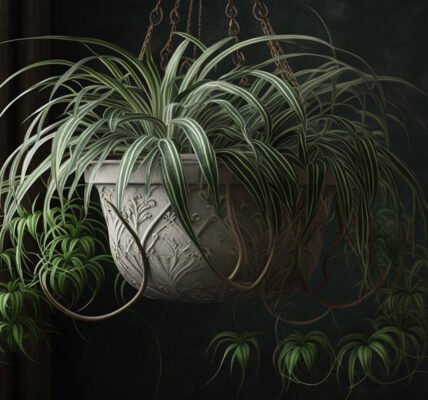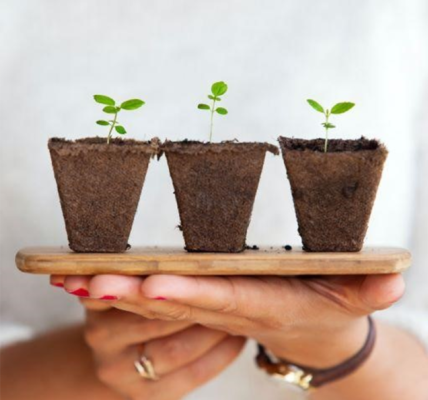Indoor plants add beauty to your space especially when you don’t have enough outdoor or garden area to grow plants. Indoor plants add colors and life to your
surroundings. Stylish planters do wonders to your home decoration.
But there’s a problem, indoor plants don’t have constant nutrients like garden soil.
After some time, nutrients in the plant soil get evacuated, and plants can suffer.
Fertilizers are the most used method to promote healthy plants. They can be used to
boost poor soil. Fertilizers help plants to grow at full potential and bloom all year
around.
Signs to notice if your plant needs
fertilizer
Nutrients help the plant to grow faster and healthier. Plants get most of their nutrients
from the soil. Soil gets nutrients from decaying plant matter, insects, composition, and
wildlife. Although fresh indoor plants have all the nutrients available initially, with the
passing of time soil lose its nutrients. Nutrient deficiency causes malnutrition in
plants.
Following are the signs of nutrient deficiencies :
● Delay in blooming
● Stunted growth
● Yellow leaves
● Unusual small flowers
Most damage can be reversed by giving proper fertilizers to plants.
Factors to Keep in Mind while
Fertilizing Plants
There are many factors to keep in mind while fertilizing your indoor plants. Some of the most critical factors are:
● Season and climate
● Type of soil
● Size of plant
● Type of fertilizer
Season and climate are more important factors for most plants. Most plants go
dormant in the winter season. Thus, they stop growing and don’t need fertilization in
this period. However, if you live in a warm climate area then there will be a short or
no dormancy period.
Fertilization also depends upon the density of soil. More dense soil has the
tendency to hold nutrients for the long term so dense soil needs less fertilizer. While
loose soil can’t hold nutrients for a long time and thus, need more frequent
fertilization.
Plants have different nutritional needs. Larger plants that naturally grow in
dense rich soil will need frequent fertilization. Smaller plants that grow in sandy soil
need less frequent fertilization.
Finally, the timing of fertilization also depends upon the type of fertilizer. For
indoor plants, there are two types of fertilizers i.e. liquid and slow release. Liquid
fertilizers are often mixed with water and given to the soil. Liquid fertilizers are given
more frequently. While slow-release fertilizers stay in the soil for a longer period of
time thus needed less frequently.
Plan a schedule for Fertilizing your
Indoor Plant
Now you know all the factors while fertilizing your plant. Every plant has its own
unique schedule of feeding. Grab a notepad and start listing the factors of your indoor
plants. What is the type of soil? Is the climate warm or cold? What is the size of the
plant?
This will give you a correct estimate of whether you’ll need frequent fertilization or a more relaxed schedule. While choosing a fertilizer you should keep in mind the
watering need of the plant. The plants that need less water should feed with
slow-release fertilizers and others should be treated with liquid fertilizers.
Some of your starting processes are trial and error. However, if you take care of
the tips then you can save your plants. Your plant will be sure to thank you for its proper nutrition.
Best Homemade Fertilizers
Fertilizing your indoor plants can be as easy as using some common kitchen waste
that is just thrown away otherwise. Making your homemade fertilizers is a super easy
way to save money.
On top of being cost-effective, it is also an environmentally friendly way to
provide nutrients to your indoor plants. So, let’s discover how you can use household
items that have the nutrients and properties your indoor plants need to survive.
Here are simple homemade fertilizers to give your indoor plants a good nutrient boost
naturally:
● Banana peels for adding Potassium
● Green Tea for acidifying the soil
● Epsom Salt for adding magnesium and sulfur
● Wood Ashes for increasing the alkalinity of the soil
● Crushed Eggshells for lowering acidity and adding calcium
● Epsom Salt for adding magnesium and sulfur
● Coffee grounds for adding nitrogen
● Gelatin Powder for a nitrogen boost
● Used cooking water for a general dose of essential nutrients
● Molasses for adding macronutrients like carbon, iron, sulfur, etc.
By using homemade DIY plant food instead of chemical fertilizers, you are choosing a
safer, more cost-effective, and environmentally friendly way to feed your plants.




